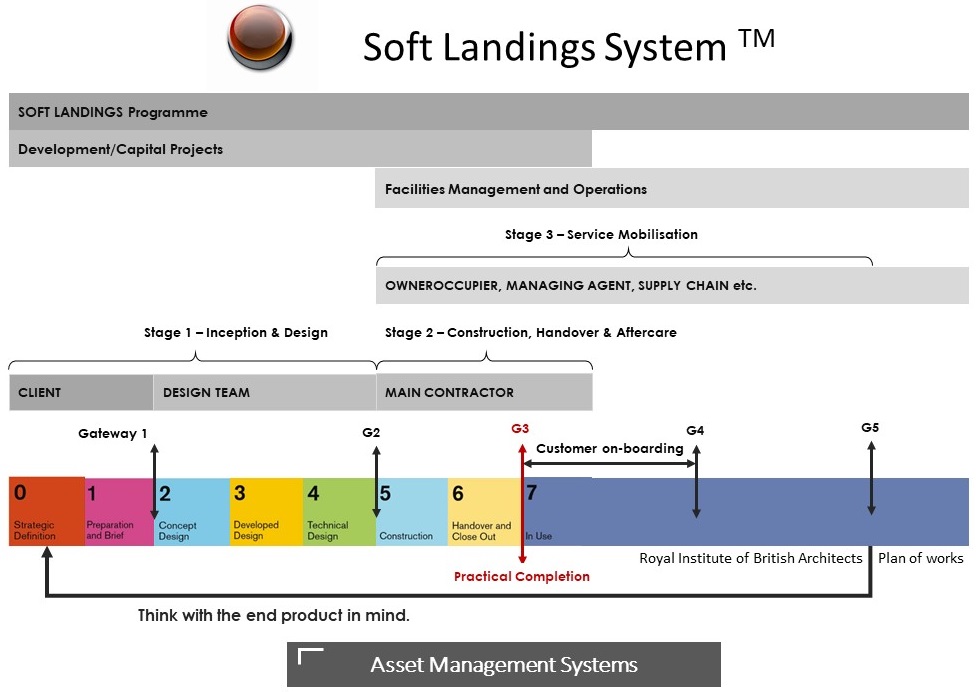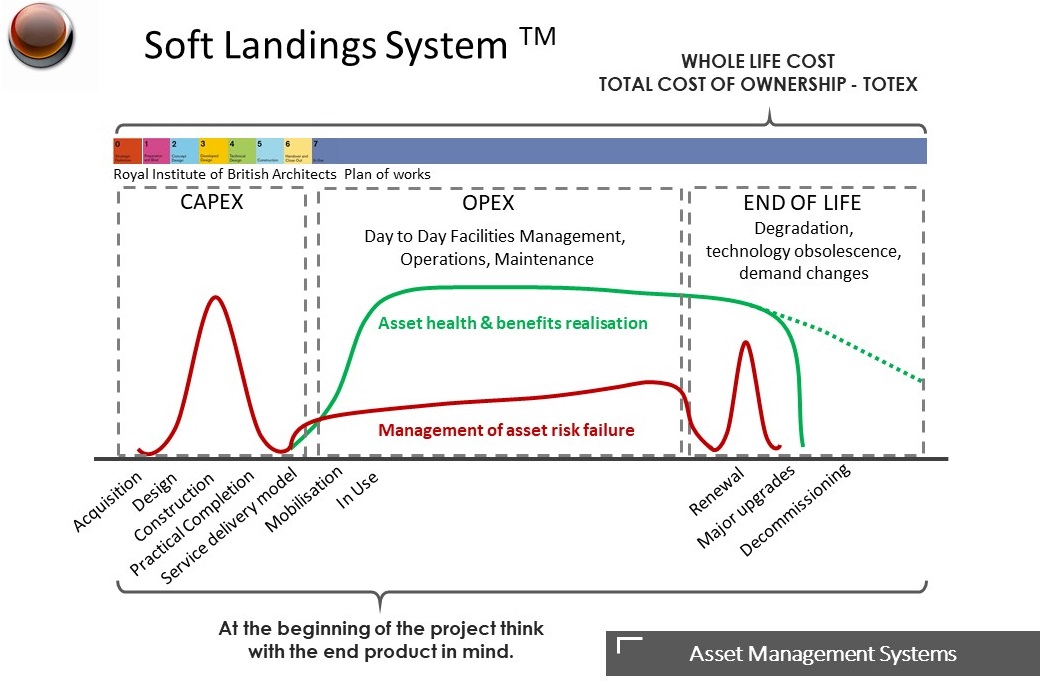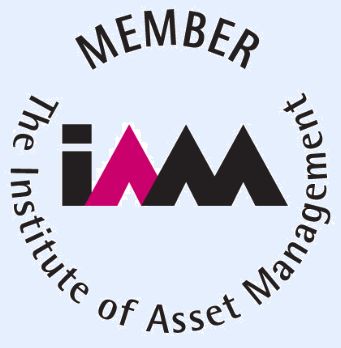Building Handovers or Soft Landings?
The transition from a building’s construction to occupation isn’t always smooth. Business advisor Gosha Jacewicz shares her experience of this type of handover.
Gosha Jacewicz is the Managing Director of Asset Management Systems and a business advisor focussing on business value propositions and delivery models. Her role combines strategic FM and IT architectures to deliver specific business transformation strategies that maximise efficiency, performance, and profitability.
“At AMS, we have developed a Soft Landings SystemTM, a methodology that adds value by enabling a quantifiable Total Cost of Ownership (Whole Life Cost) at the point of design and construction. It is a catalyst for achieving net-zero carbon emissions and reduction of environmental impacts, therefore meeting the government CO2 reduction targets.”
– Gosha Jacewicz
Managing Director, Asset Management Systems
The Potential Shortcomings of Building Handovers
There is a broad consensus that building handovers can be challenging, we all know what a typical project handover looks like when it goes off the rails.
Just imagine an FM team, at practical completion, standing with a set of keys, trying to work out what exactly what has been handed to them. There is no one in the development team to call for information. At the same time, tenants are moving in, unloading furniture or starting fit-outs. Then add to the mix an FM team that is rushed into thinking about a delivery model that they had to procure and mobilise only yesterday. Everyone is trying to find a computer to open O&M manuals, or looking for the right information to set up maintenance regimes and ensure compliance.
Clearly this is going to lead to shortcomings such as:
- Compromised relationships and loss of revenue among all stakeholders.
- Costly handovers due to excessive defects and design retrofits.
- Time-consuming and inefficient processes, leading to excessive delays from both capital and facilities management teams.
Soft Landings Strategies
The challenges faced during handovers are a result of two significant phases in the life of a building coming together at the single point of practical completion. The fundamental reason for the disruption is the lack of overarching programme across capital expenditure (CAPEX) and operating expenditure (OPEX).
Fortunately, a different approach can be adopted. Soft Landings strategies can enable a smooth transition from construction to occupation in a “bump-free” manner. It can be remarkably successful if we start thinking with the end product in mind at the beginning of the project, in particular during the Royal Institute of British Architects design phase at Stage zero to four.
The reasons for this are:
- 80 per cent of decisions related to building capability post-handover takes place during the design phase.
- The opportunities for asset whole life cost analysis, optimisation, and inclusion of failure predictability is only available in the design phase.
- As Private Financial Initiative statistics show, there is approximately a 20-25 per cent saving to be delivered over the whole life cost of the project, if long-term decisions are taken during asset design.
- If we think about the end of life at the point of design, we would have solved all the maintenance and replacement problems at the beginning.
An Integral Part of the Design and Construction Process
The Soft Landings handover strategy is, therefore, a golden thread developed to be an integral part of the design and construction process, overspilling into operations and maintenance. It is not an add-on, it is a bridge between CAPEX and OPEX, leading to delivery of future-proofed building solutions. It also accelerates time to value, and enables whole life cost delivery models.
At AMS, we have developed a Soft Landings SystemTM, a methodology that adds value by enabling a quantifiable Total Cost of Ownership (Whole Life Cost) at the point of design and construction. It is a catalyst for achieving net-zero carbon emissions and reduction of environmental impacts, therefore meeting the government CO2 reduction targets.
The Soft Landings SystemTM has four key stages with clear deliverables for both CAPEX and OPEX teams signed off at each gateway. This methodology allows both construction and FM teams to work alongside each other leading to a smooth transition from construction to occupation in a “bump-free” manner.

The best outcomes from the Soft Landings SystemTM are delivered by a Soft Landings Lead who provides the bridge between the development team, design and construction team, and the facilities manager or managing agent, depending on the specific project arrangements.
The Soft Landings SystemTM can be introduced across any type of project from refurbishments, fit-outs, or new builds. The most effective application is when the Soft Landings Lead is introduced at the beginning of the project at RIBA Stage zero and one but not later than RIBA Stage five.
The key benefits of aligning capital projects and FM teams’ outcomes from the early stages of the project results in:

- Early customer on-boarding and rent collection or reduced rent-free period
- Facilities management teams are fully trained and briefed before practical completion
- The building is statutory compliant on practical completion
- The Total Cost of Ownership (Whole Life Cost) is calculated during the design phase.
- Improved profitability with known upfront maintenance and service charge costs
- Asset health & benefits realisation throughout the lifecycle



